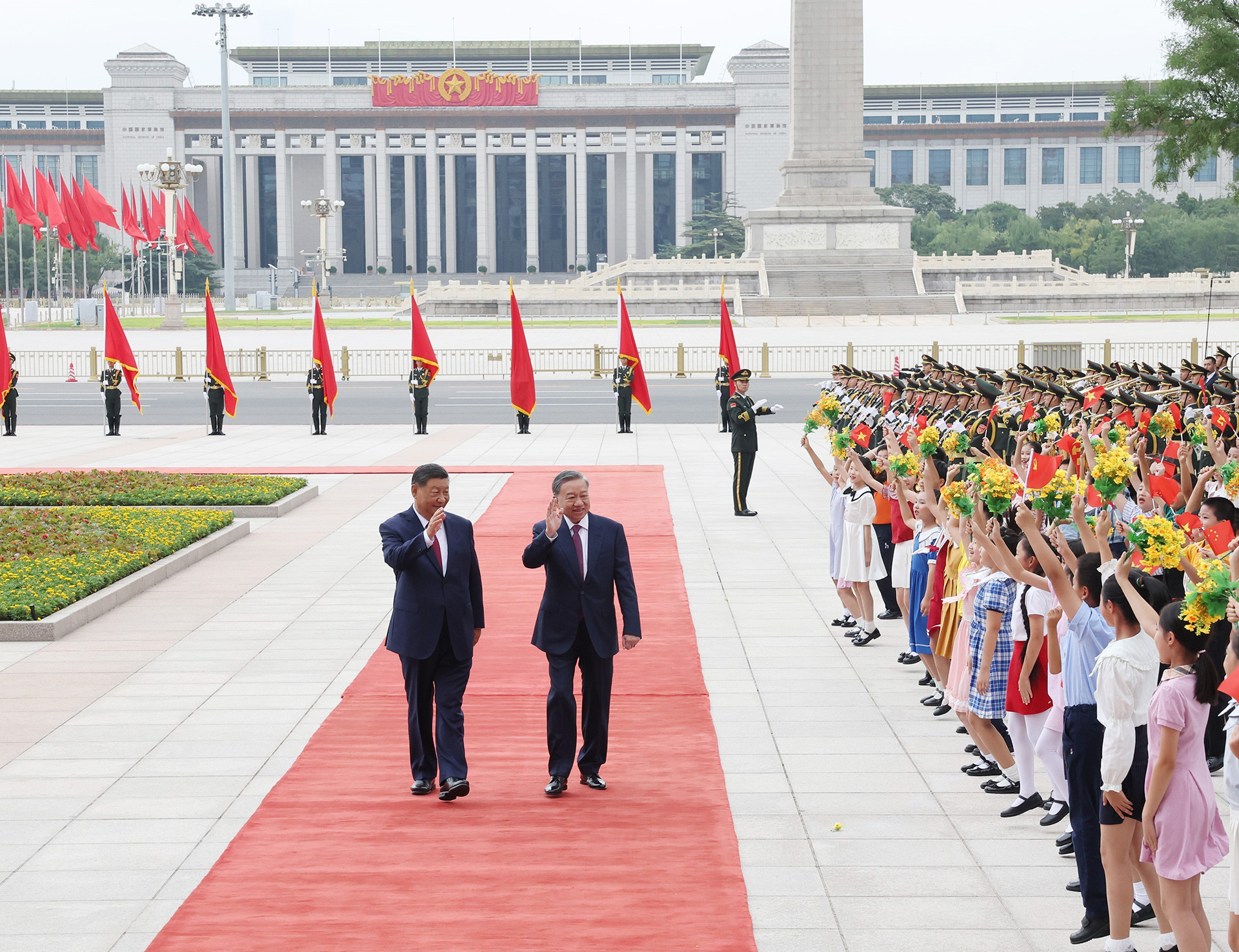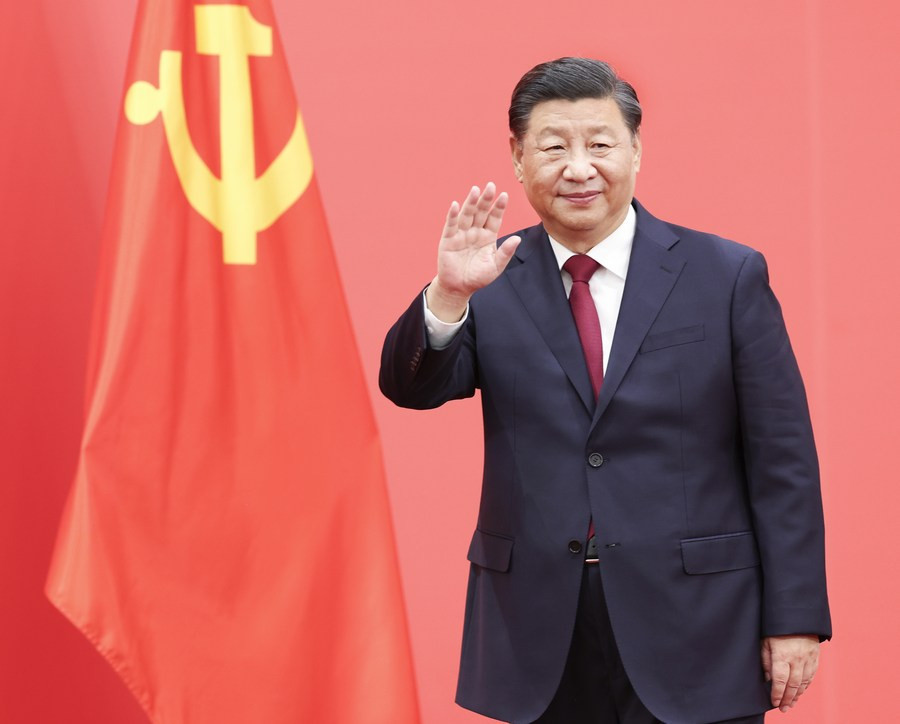
President Xi Jinping’s visit to Vietnam comes less than a year after General Secretary To Lam’s trip to China. According to Deputy Prime Minister and Minister of Foreign Affairs Bui Thanh Son, the visit is a major political and diplomatic event for both Parties and nations, carrying strategic significance and long-term impact on the development of Vietnam-China relations. This comes at a time when both countries are entering a new era of development.
This will be President Xi's fourth visit to Vietnam as China’s top leader, and his second visit during the 13th National Congress of the Communist Party of Vietnam and the 20th Congress of the Communist Party of China.
During his visit, President Xi Jinping is expected to hold high-level talks with General Secretary To Lam and President Luong Cuong, as well as separate meetings with Prime Minister Pham Minh Chinh and National Assembly Chairman Tran Thanh Man. The leaders will discuss major policies and directions to further advance bilateral relations. Xi is also scheduled to participate in other key diplomatic activities.
“The Party and State leaders of Vietnam look forward to and expect the visit to yield positive outcomes in several areas,” Deputy Prime Minister Bui Thanh Son said.
China and Vietnam are increasing strategic-level exchanges, particularly direct communication between the top leaders of both Parties and states. This builds stronger political trust and facilitates the exchange of experience in national governance and development.
The two nations aim to identify key cooperation areas and elevate their partnership through more practical, effective, and sustainable collaboration. They are expected to highlight areas where Vietnam’s needs align with China’s strengths, such as standard-gauge railway construction, agricultural trade, science and technology, education and training, digital economy, and green economy.
Around 40 cooperation agreements between ministries, agencies, and localities are expected to be signed during the visit. These agreements will form an important foundation for deeper and more effective bilateral cooperation in the future.
The visit is also expected to generate a ripple effect across various levels of society and sectors in both countries, promoting strong implementation of the Vietnam - China People-to-People Exchange Year in 2025.
Through candid, sincere, and substantive exchanges, both sides aim to better understand each other and find satisfactory solutions to existing issues related to borders and maritime disputes. They are committed to ensuring that maritime matters do not affect the healthy trajectory of bilateral relations.
“With high-level attention, close coordination, and thorough preparation by both sides, President Xi Jinping’s visit will be successful on all fronts and mark a new milestone in our friendly neighborly relations,” the Deputy Prime Minister said.
Vietnam aims to start construction on Lao Cai - Hanoi - Hai Phong railway this year

Deputy Prime Minister Bui Thanh Son emphasized that since establishing the Comprehensive Strategic Cooperative Partnership in 2008, and especially after several historic visits, bilateral ties have seen strong, comprehensive, and outstanding development.
Both sides have agreed to deepen and elevate their partnership by building a “Vietnam - China community with a shared future of strategic significance,” guided by the “six more” principle.
During General Secretary To Lam’s visit to China in August 2024, top leaders of both Parties reaffirmed that strengthening bilateral ties is a top priority and a strategic choice in their respective foreign and neighborhood policies.
Vietnam and China are also enhancing coordination within multilateral mechanisms. Interactions and cooperation between their Parties, National Assemblies, mass organizations, ministries, and localities have expanded and deepened, establishing various effective and practical cooperation mechanisms and programs.
In 2024, economic and trade cooperation reached new heights, exceeding USD 200 billion according to Vietnamese statistics and USD 260 billion according to Chinese data.
Vietnam remains China’s largest trading partner in ASEAN and its fourth-largest trading partner globally.
In the first three months of 2025, bilateral trade reached USD 51.25 billion, a 17.46% increase. China has become the top export market for Vietnam’s agricultural, forestry, and fishery products, benefiting millions of Vietnamese farmers.
Infrastructure connectivity, especially railways, has seen important progress. Both sides are working closely on the planning of the Lao Cai - Hanoi - Hai Phong railway line.
Vietnam aims to begin construction on this line in 2025 and to finalize the planning for two additional railway routes - Mong Cai - Ha Long - Hai Phong and Dong Dang – Hanoi - by 2026. Pilot construction of a smart border gate between the two countries has also made encouraging progress.
Currently, about 24,000 Vietnamese students are studying in China, double the number from five years ago. In tourism, China remains Vietnam’s top source of international visitors.
Both countries continue to manage and resolve differences appropriately, maintaining peace and stability in the East Sea.
Tran Thuong